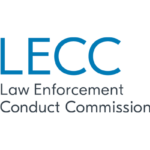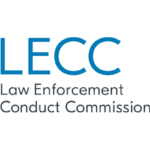Police Surveillance Policy Targets First Nations Youth

The NSW Police Force has been operating a secretive surveillance list since February 2000, which targets both youth and adult offenders – as well as individuals with no priors deemed to have the potential to commit future crimes – known as the Suspect Target Management Plan (STMP).
Those placed on the hit list are subjected to intensified policing with a view to disrupt their possible criminal behaviour. STMP targets often don’t know they’re on the list. If they are aware, they can’t access the reasons why, and nor are they able to find out how to get off it.
The Law Enforcement Conduct Commission (LECC) released its interim report into its investigation of the covert program on 13 February. And the document was signed off by now stood down former LECC commissioner Michael Adams QC.
Referred to as Operation Tepito, the LECC investigation had a specific focus on the unacceptable use of a risk assessment tool designed for adult offenders on children and youths, as well as whether the STMP has been applied in a discriminatory manner and in some cases, unlawfully.
And the sole NSW police oversight body found that the STMP targets a disproportionate amount of First Nations children and youths, its intrusive tactics result in “unreasonable surveillance and monitoring of young people”, and repeated searches have been applied outside of legal frameworks.
Targeted surveillance
The original STMP was revised in May 2005, and it’s this second version of the “pre-emptive policing tool” that the LECC investigated.
NSW police outline that a well-run STMP should involve the identification of suitable targets, a standardised assessment of the risk they pose, the development of an individual specific target action plan (TAP), and subsequent review of the impact it’s having on a target’s behaviour.
As the report authors tell it, “the policy is designed as a framework for local responses to crime issues”, so area commands choose who’s on its list. And it’s been reported in the past that any police officer can nominate a potential target.
A TAP “sets the direction for how police are to disrupt the target’s criminal behaviour” using four strategies. There are positive strategies, such as diversion programs or youth clubs. Compliance strategies, which involve bail and juvenile detention. And there’s also information gathering.
But, it’s “active visible targeting strategies” that have raised questions around legality. These involve consorting warnings, patrolling of targets’ addresses, and the stopping, detaining and searching of targets.
Indigenous young people
The investigation involved the analysis of police data regarding 429 targets between the ages of 9 and 17, over the 24 month period ending in August 2018. And it found “patterns of targeting that appear to have led to unreasonable, unjust and oppressive interactions for young STMP targets”.
LECC investigators outlined that 72 percent of the youths selected for targeting identified as being First Nations. However, NSW police dispute this figure, as it claims it’s problematic, due to its reliance on input from both targets and interviewing officers.
Police use a different calculating method that puts the number of First Nations STMP youth targets at 42 percent. And NSW police commissioner Mick Fuller has commented that figures aren’t due to racial bias, but result from local area commands being left to conduct their own risk assessments.
The LECC analysis also found that the surveillance of targets was unreasonable, that officers were using target status as a reason to carry out searches beyond the scope of the law, the risk assessment method is open to bias, and that assessment of targeting results are not evidence-based.
Kid criminals
The youngest person on the list was an Aboriginal child, who was only 9 when nominated. They were one of four targets, with no prior convictions. And the child was identified due to the possibility that they were a victim of domestic abuse, as well as a report mentioning them as a person of interest.
“While there were no charge records prior to this young person becoming an STMP target, the young person was charged 94 times after becoming an active target, the most serious charge being for aggravated robbery,” the authors explain.
The report also details that one young person was subjected to 195 home visits over a 17 month period, while another youth was paid a home visit at 3 am in the morning.
A modern colonial legacy
As UNSW Faculty of Law senior lecturer Dr Vicki Sentas told Sydney Criminal Lawyers in November, the STMP is a form of proactive policing, which is a technique that’s become an increasing trend in western nations over the last couple of decades, “largely for economic reasons”.
“Proactive policing was contrasted to traditional policing, so-called reactive policing. And proactive policing was seen to be a more efficient and effective technique,” the doctor explained. “Police forces all over the world sought to prevent crime by predicting” where it would occur.
Dr Sentas co-authored the 2017 report Policing Young People in NSW, which exposed the nature of the STMP and its disproportionate targeting of First Nations youth to the public. And the report was a key factor in the LECC launching its investigation.
“First Nations people have been subjected to far too much arbitrary, violent and damaging forms of policing since colonisation,” she further said, adding that the “gross, disproportionate and discriminatory targeting of Aboriginal people under the STMP is a continuation of the past”.
Third time lucky
In conclusion, the report authors said the police data they analysed “indicates that the NSW Police Force could not have reasonably engaged in ensuring lawful policing activities were applied to young STMP targets”.
And Operation Tepito resulted in fifteen recommendations. These include creating an assessment tool designed specifically for children and young people, that the use of search powers should be demonstrated to be lawful, and thorough reasons for home visits should be provided.
The report further outlines that since the LECC began its investigation of the use of the STMP on young people, NSW police has introduced changes and is currently redesigning the policy with the aim of rolling out a third version.
“It is apparent that the STMP III draft policy addresses many of the concerns the Commission identified with STMP II in its application to children and young people,” the report reads.







